Turkish Desserts
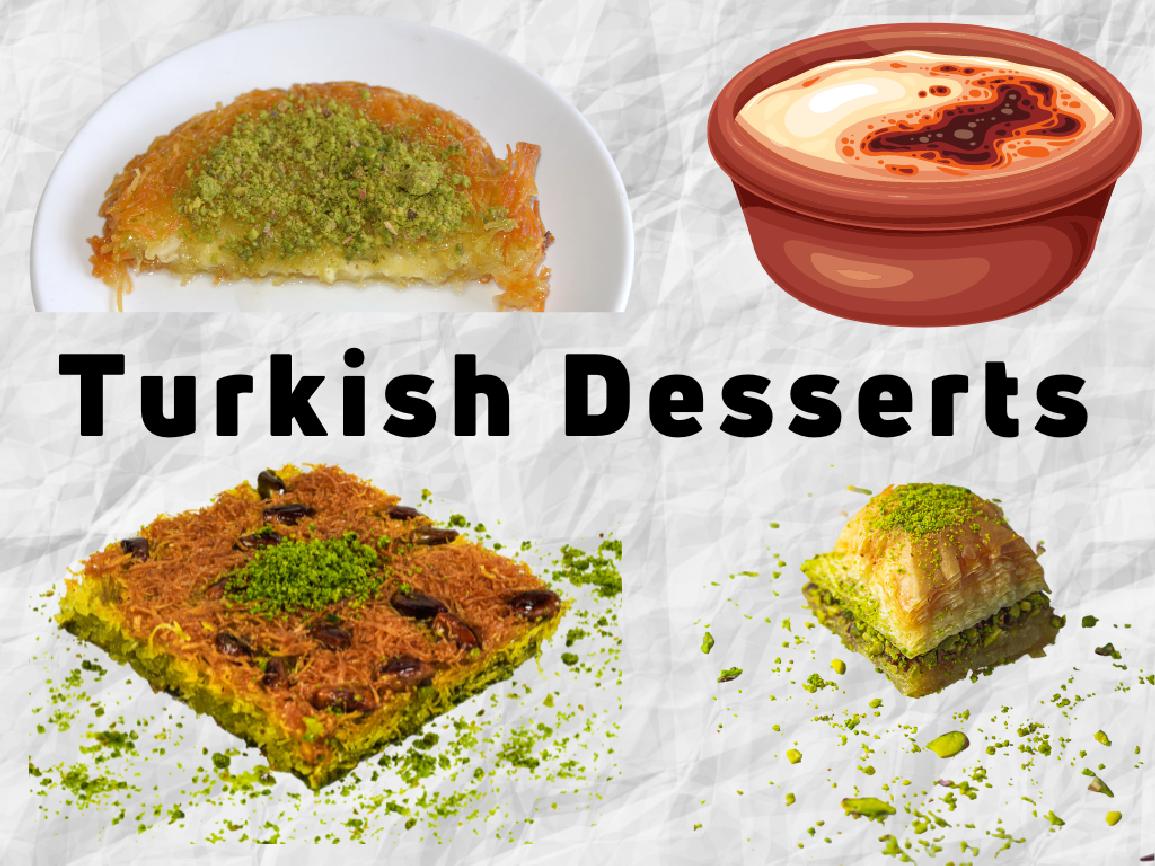
Details
- Walnut Tahini Halva
- Corn Flour Halva
- Palace Halva
- Molasses Flour Halva
- Summer Halva
- Semolina Halva with Molasses
- Pull Halva
- Chocolate Halva
- Sugar, lemon and water are boiled in a saucepan and a thick syrup is obtained.
- The syrup is left to cool.
- Dough is prepared with flour, water, yeast, sugar and salt and mixed with the help of a mixer.
- This dough, which is more viscous than cake dough, is left to ferment for 1 hour.
- Add half of the oil to a pan and heat it.
- It is taken from the dough as if making a fist.
- With the help of a dessert spoon dipped in oil, the piece on the fist is thrown into the hot oil and fried on both sides.
- The fried dough is thrown into the syrup, mixed in the syrup, left for 2 minutes and taken to the serving plate.
- This process is continued until the dough is finished.
As you know, Turkey is quite famous for its Turkish desserts . It is not a coincidence that most Western writers refer to Turkish delight as bribes in their classics. An old Turkish saying advises ” let’s eat dessert and talk dessert“. Dessert has always been an important and distinctive element for Turkish cuisine . This was the case during the Ottoman period, and it is the same today. In fact , dessert has a spiritual significance dating back to long before the Ottoman Empire.
In the 8th century, in Samarkand, people used to put sugar on the lips of newborn babies to make them talk sweet. Mevlana, the 13th century mystical poet and philosopher enlightened in the way of Sufism , used sugar and sweets to symbolize faith and love for God. Turkish sweets are served on the occasion of many important changes and special occasions in people’s lives such as birth, engagement, marriage, military service, circumcision, returning to a pilgrimage, moving to a new house, getting a job, enrolling in school, graduating and death.
And Turkish desserts , which can be eaten whenever you feel like it , are carefully prepared not only with their ingredients but also with their visual effects and presentations. The essence of traditional Turkish cuisine lies in the attention to detail, whether it’s an elaborate pastry or a simple compote. We can say that it is the showcase of Turkish cuisine for desserts. Turkish cuisine literally has a wide range of desserts. Turkey’s sweets and confectionery testify to the rich history of its people’s cuisine and geography.
Whether you need a sweet dessert with lots of sugar or a more refined taste, it is possible to find a dessert suitable for every occasion in Turkish cuisine, such as puddings, cakes and cookies, halvah, candies, sherbet and fruit desserts. The variety of Turkish desserts comes from cultural exchanges and historical heritage of ancient civilizations. The Ottoman history spanning the continents, Turkey’s location, and the fact that dozens of civilizations have lived in these lands allow us to have great diversity and richness.
This situation also affects Turkish cuisine. The stories of Turkish desserts are also a proof of what we have said. You’ve probably tasted baklava among Turkey’s famous desserts, but there are so many more desserts that you should try in Turkish cuisine, it’s endless.
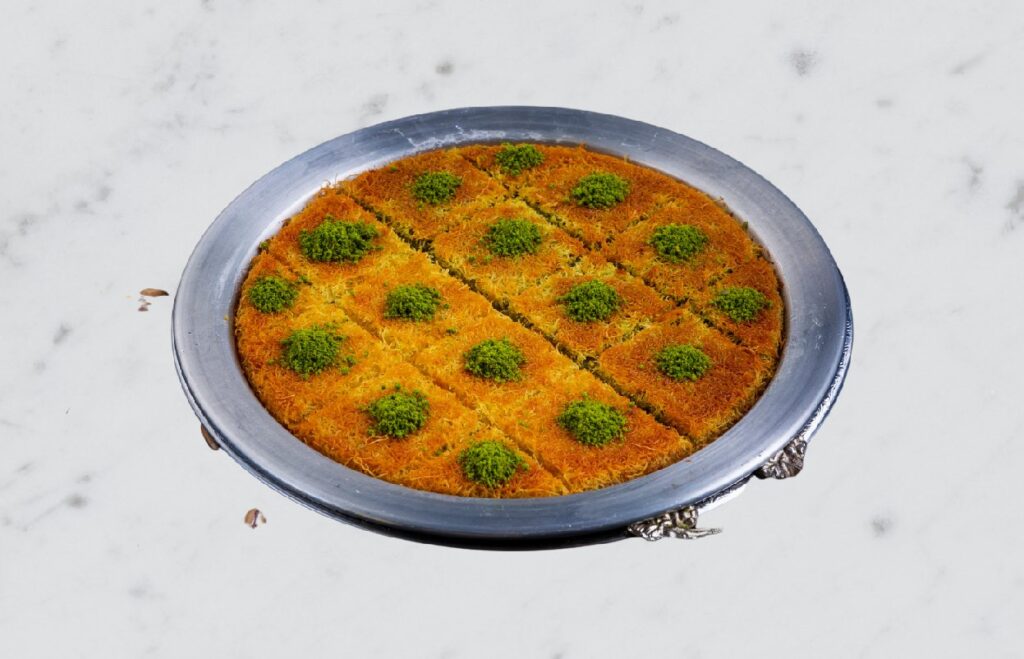
Kunefe
Kunefe the king of sorbet desserts. There ‘s never a bad time for a slice of künefe . We are very lucky to have künefe, which is considered one of the most delicious desserts in Turkey, in our kitchen. The fact that a few of our soldiers who went to Yemen during the Ottoman period were engaged in confectionery here and continued this business when they returned, caused the künefe to be made in Turkey.
1930s and in Hatay in the 1940s, is kadayif dessert. Kunefe dessert can now be found in almost every city in Turkey, but you can’t really get enough of the künefe made in Hatay. Wire kadayif , unsalted leavened Hatay cheese, butter, sugar and water are used in the production of this insatiable flavor . First , water and sugar are boiled in a saucepan and syrup is prepared. Then the syrup is left to cool.
The butter is melted in a tinned copper tray and then the raw kadaif is poured into it. Kadaif blends beautifully with butter. In the middle of the kadaif, the cheese is grated and sprinkled. The other half of the kadayif is placed so that it covers the cheese. The trick for making the kadaif delicious and beautiful is to press the kadaif under and on it very tightly. Kunefe is cooked until the bottom and top are browned. It is served by pouring warm syrup on künefe, which is cut into slices, and adding peanuts, cream, or ice cream if desired.

Would you like to be a host in Turkey and taste these ?
Click to view the houses suitable for you.
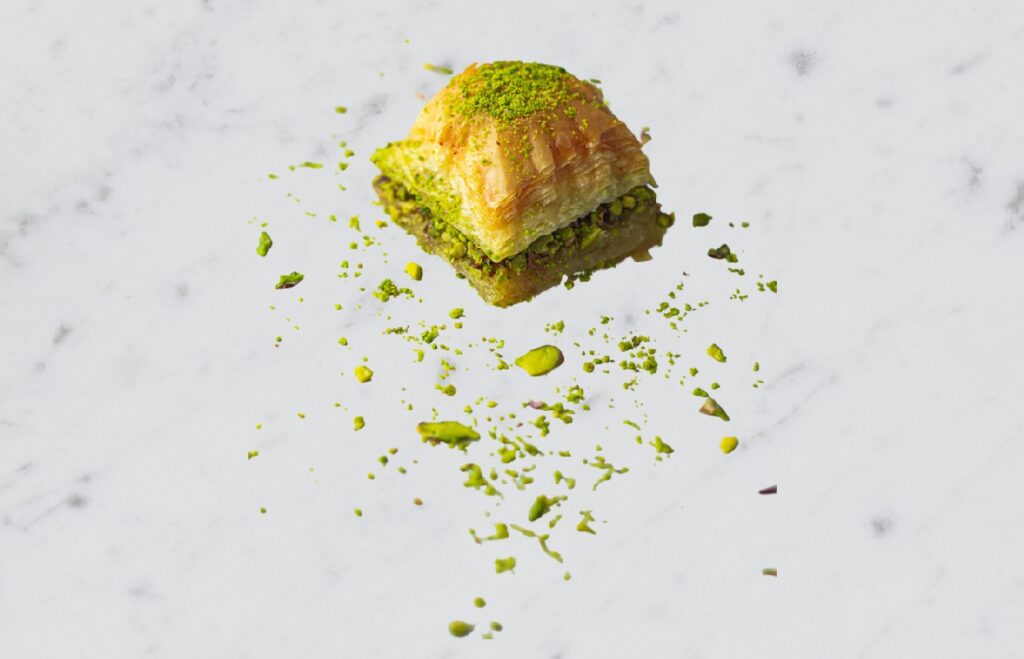
Turkish Baklava
of Turkish Baklava in Turkish cuisine is very important. This unique dumpling , which you cannot refuse, is an important dessert that has also taken its place in Middle Eastern, Balkan and South Asian cuisines. Many historians believe that baklava owes its origin to medieval Turkish traditions. In the 11th century AD, nomadic Turks were known for making layered bread. However, these early nomads didn’t always have access to the oven, so they didn’t make baked sweet pastries.
So their yufka was a thin, unleavened flatbread made in a frying pan over the fire. It is thought that this layered application of yufka later turned into baklava. Today’s classic baklava took its delicate and ostentatious shape during the Ottoman period. Of course , when we say Turkish baklava , the first city that comes to mind is Gaziantep. Registered as a Turkish dessert by the EU Commission on August 8, 2013, baklava is made from paper-thin layers of phyllo, butter, syrup obtained with sugar, water and lemon.
Depending on the region, pistachios, walnuts, hazelnuts or almonds can be placed between the thin phyllo dough. This Turkish dessert , which you ca n’t get enough of, sweetened with sugar syrup , can also be sweetened with honey syrup in some regions. Flour, milk, oil, baking powder, vinegar, salt and eggs are used for baklava dough . The flour is first put in a deep bowl and the middle part is opened like a pool. Add eggs, milk, sunflower oil, salt, baking soda and vinegar.
The ingredients are kneaded until the dough reaches the consistency of an earlobe and rested for 1 hour at room temperature, covered with a damp cloth. On the floured counter, the dough pieces divided into 20 equal parts are rolled out to the size of a plate. Corn starch is sprinkled between them, then the dough grains are stacked on top of each other. These stacked doughs are rolled thinly. The dough layers and the baking tray are greased with melted butter. 2 of the rolled dough sheets are separated for the lower and upper layers.
10 pieces of phyllo dough are placed on the tray, greased with butter in between. Finely ground pistachios, walnuts, hazelnuts or almonds are sprinkled evenly in the middle layer. The other phyllo sheets are stacked on top of each other by spreading butter between them and the phyllo sheets remaining on the side are pushed towards the bottom of the tray. Baklava is sliced as desired. Spread a little butter on the baklava and bake the tray in a preheated oven at 180 degrees for about 50 minutes.
baklava sherbet , granulated sugar is dissolved in water in a deep saucepan and cooked for 25 minutes. Add lemon juice to boiling water and take it off the stove. This sherbet is poured little by little on the baklava that is taken out of the oven. It would be perfect to eat a plate of Turkish baklava and drink a glass of Turkish tea while sitting on a low stool in front of a cafe.
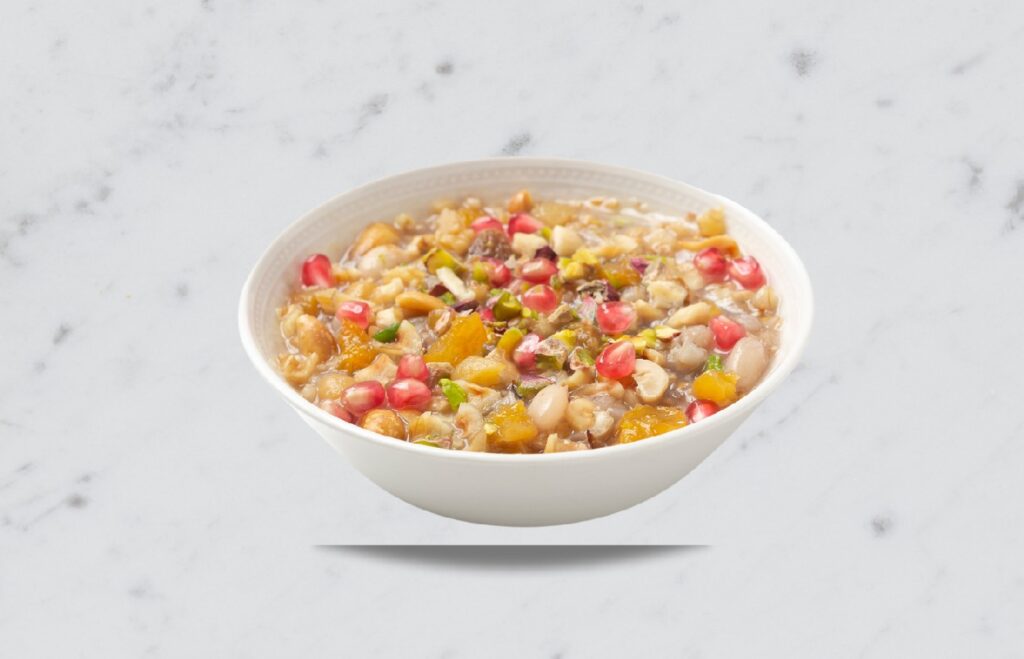
Ashura
which you should definitely taste , is made on the tenth day of the month of Muharram, which is the symbol of sharing, fertility, togetherness and unity in the Islamic faith. The tenth day of Muharram is a day when important events in the lives of the prophets. This day is called the day of Ashura . The word Ashura is derived from the word ashara, which means ten. Sources say that Prophet Moses crossed the Red Sea on the tenth day of Muharram. He crossed the Red Sea and saved the Israelites from Pharaoh.
It coincides with the tenth day of Muharram that the great ship, which Prophet Noah built by Allah’s command and filled with all kinds of animals, survived the great flood. In the deluge, when the world was completely destroyed, only those on the ship survived. Noah and his family, whose supplies are low because they have been on the ship for months, cook everything left in a cauldron. What Prophet Noah cooked is called ashura . According to the cultural history, there are many more events related to the month of Muharram.
The acceptance of the repentance of Prophet Adam, the fact that Prophet Ibrahim did not burn in the fire, the ascension of Prophet Idris to the living sky, the recovery of Prophet Ayyub from diseases, the reunion of Prophet Jacob with his son Yusuf, the birth of Prophet Jesus and his ascension to the sky, Prophet Yunus The escape of the fish from the belly of the fish coincides with the tenth day of the month of Muharram , the “Karbala Incident” in which 72 relatives of the Prophet Muhammad and his grandson Hussein were martyred .
making ashura are wheat, chickpeas, white beans, dried apricots, dried figs, cloves, sugar, water, hazelnuts, walnuts, currants or fresh grapes, pomegranate seeds and cinnamon. The recipe for Ashura is as follows. Chickpeas, white beans and wheat, chickpeas and dry beans are soaked in water in separate containers overnight. Wheat is added to the water and boiled until the water reaches the consistency of boza and the wheat is soft.
White beans and chickpeas are also boiled separately. Dried apricots and dried figs are also cut into cubes , boiled in separate pots for 5 minutes and drained. Then all the boiled ingredients are combined, including currants and fresh grapes. After adding cloves to the mixture, water is added until it reaches the consistency of boza. Finally, sugar is added to the pot and cooked by mixing. Ashura dessert should be warm before pouring into bowls. Otherwise, the grains will sink to the bottom. Then it is decorated with walnuts, hazelnuts and pomegranates.
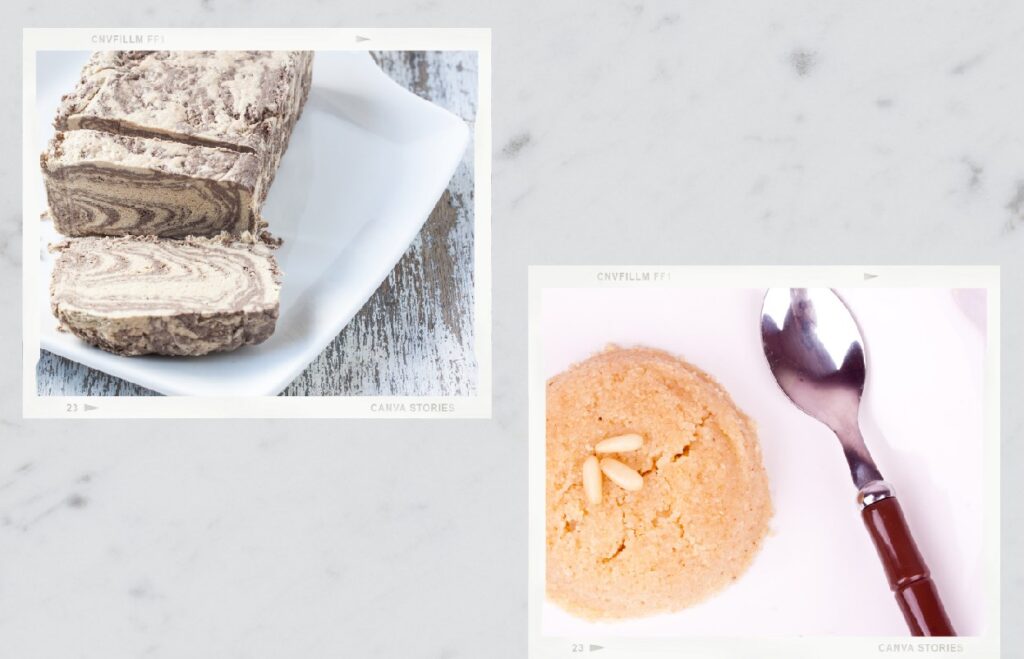
Halvah
If you have limited time and materials to make something special for yourself or your friends , Halva is an easy dessert. If you want to enrich your halvah, you can add pine nuts, walnuts or pistachios and sprinkle cinnamon on it. Among the various types of halva in Turkish cuisine , two types of halva are very popular. The first one is semolina halva and the other one is flour halva. Both are often served at funerals, but are also known as family reunion desserts.
These halvah are old-fashioned desserts that we all love. The word halva entered Turkish cuisine when Turks from Arab culture accepted the Islamic religion. The word ‘ Hulv ‘ in Arabic culture means sweet. This dessert was prepared especially for the Ottoman sultans and their families. However, it was distributed to those living near the sultan’s palace on special occasions such as Ramadan.
In Turkish culture, halva dessert is commonly made after funerals. It is said that the reason for this is to remind the deceased how sweet and kind he was. When our loved ones passed away, it makes sense, isn’t it, to eat this dessert and remember him as a kind and sweet person? If you want to eat this dessert, you can find it mostly in fish restaurants. In kebab restaurants, künefe is usually served. Basically you need to know where to eat certain dessert in Turkey.
Apart from these two magnificent halva, some of the flavors that are among the varieties of halva are as follows:
Hot water or milk, granulated sugar, butter, oil, flour and walnut materials are used to make flour halva . hot water in a bowl or with milk, granulated sugar is mixed. It will be enough for the sugar to melt . In a suitable saucepan , melt the butter in oil. After the oil melts by adding flour Stir with a wooden spoon and fry for 15 minutes.
After the flour is sufficiently roasted, walnuts are added and roasted for 1 or 2 more minutes. Sherbet is added slowly and stirred constantly so that there are no balls until it is absorbed. Halva, which is ready after the flour is roasted, is taken from the stove and shaped with a tablespoon.
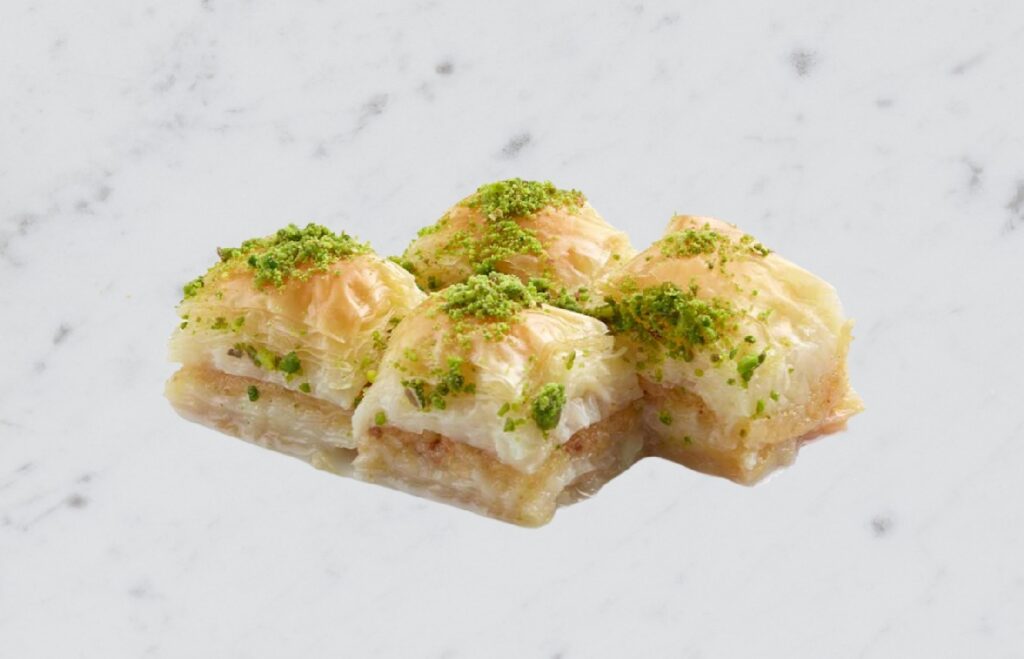
Milk Nuriye
In 1980, when the economy turned into a disaster, municipalities imposed price limits on baklava. This upper limit for baklava makers was a complete disappointment. When they couldn’t change the situation, they made baklava with milk instead of sherbet and with hazelnuts instead of peanuts. And the name of this dessert was Nuriye with Milk .
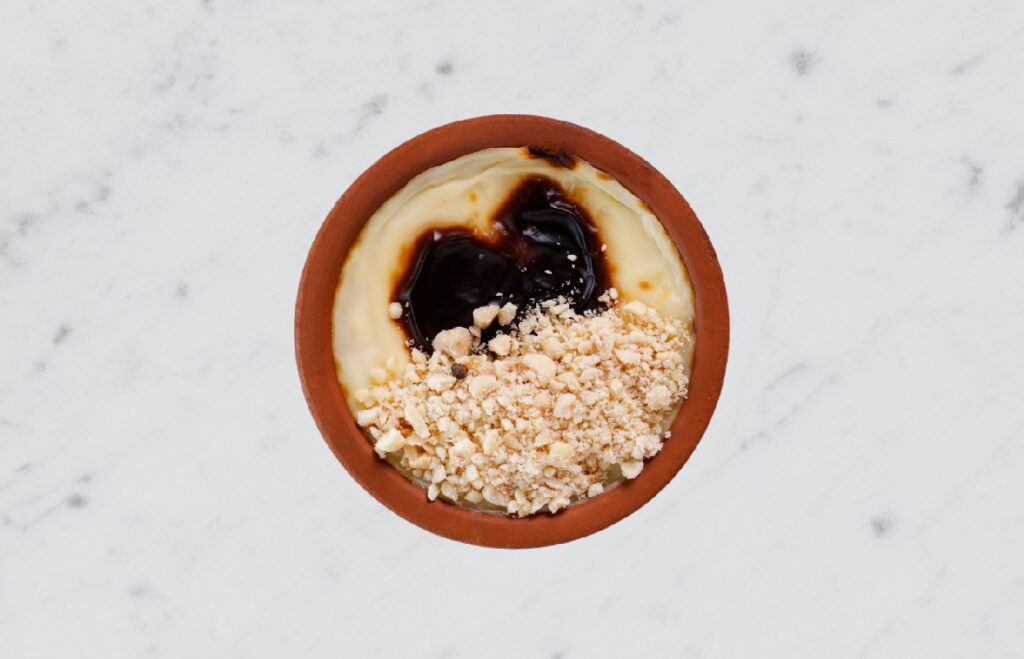
Sutlac (Rice Pudding)
The word rice pudding is derived from a meal with milk. It corresponds to ‘uwa’ in the Turkish Dictionary of Dialects. The origin story of this delicious dessert is quite interesting. A dessert is prepared from a mixture of rice, milk and sugar for someone with stomach problems. Because it contains milk, this healing dessert is called a milk dish. And after a while, its name evolves into rice pudding. According to the legend, sutlac is a dessert that came to our country from Central Asia via the Silk Road.
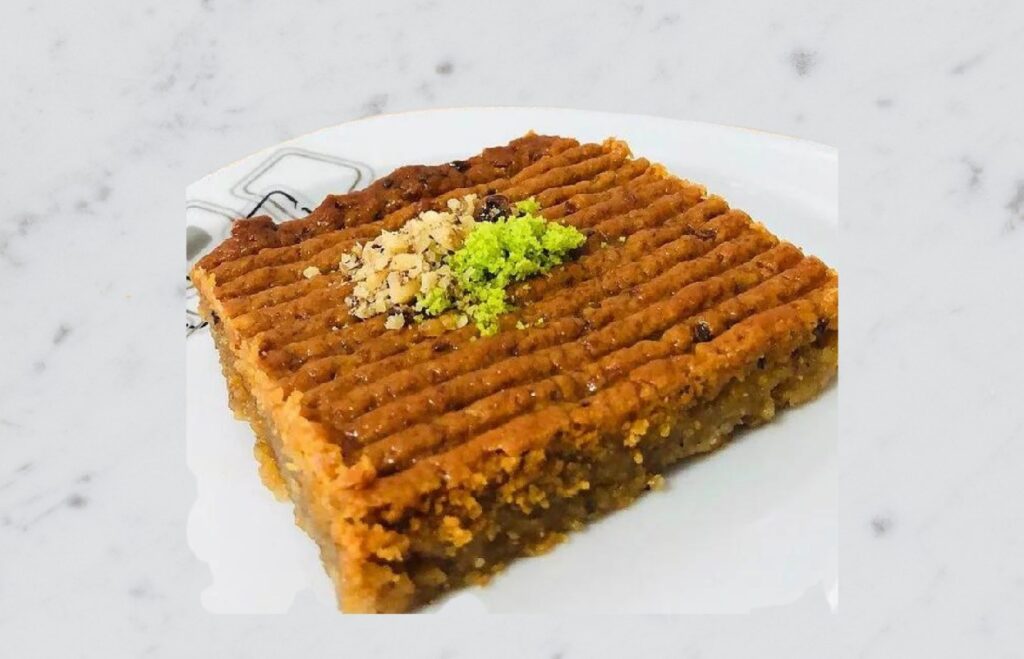
Nevzine
Although it is not known where the name Nevzine comes from, it is a traditional Turkish dessert. Flour, olive oil or butter and walnuts are made into dough and filled on the tray and baked. Nevzine is among the delicious Turkish desserts served to important guests as well as brides who have given birth to a son .
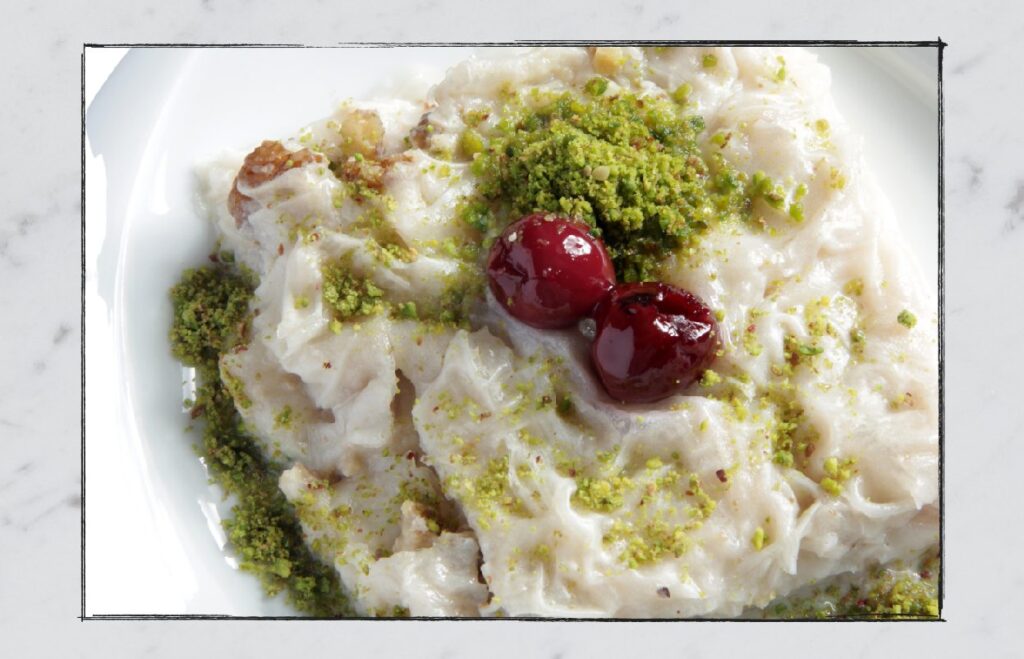
Gullac
Güllaç, which is really easy to make, practical and very tasty, is also a light dessert. Think about it, dessert is ready in a total of 15 minutes! This dessert, which you can always have among your preferences, is also called the rose of the month of Ramadan. In fact , Güllaç dessert (turkish dessert) sis a perfect dessert that we start to see as Ramadan approaches, continues its reign during Ramadan and then disappears. The story of Güllac goes back to the Ottoman period.
Until the middle of the 1400s, the people, after drying the phyllo dough that they stored and opened from cornstarch, It is known that he wets it with sugar and milk and consumes it. Rose water was added to this mixture over time, and a dessert called rosewood soup came out. Then his name was Güllaç. In 1489, Güllaç was introduced to the palace kitchen by Ali Usta from Kastamonu . Ali Usta, who went on a tour to Kastamonu , provided the starch pastries by soaking them with milk. The magical taste of Güllac made it the head of the palace.
For the syrup, sugar and milk are mixed in a saucepan. Heat over medium heat until the sugar melts. Vanilla is added to this mixture, which does not need to boil, and stirring is continued by lowering the stove. The syrup should be warm. Güllaç dough is divided into pieces in a suitable tray and milk syrup is poured on each leaf. Add peanuts or pistachios and keep in the refrigerator for half an hour. It is decorated as desired and cut into slices.
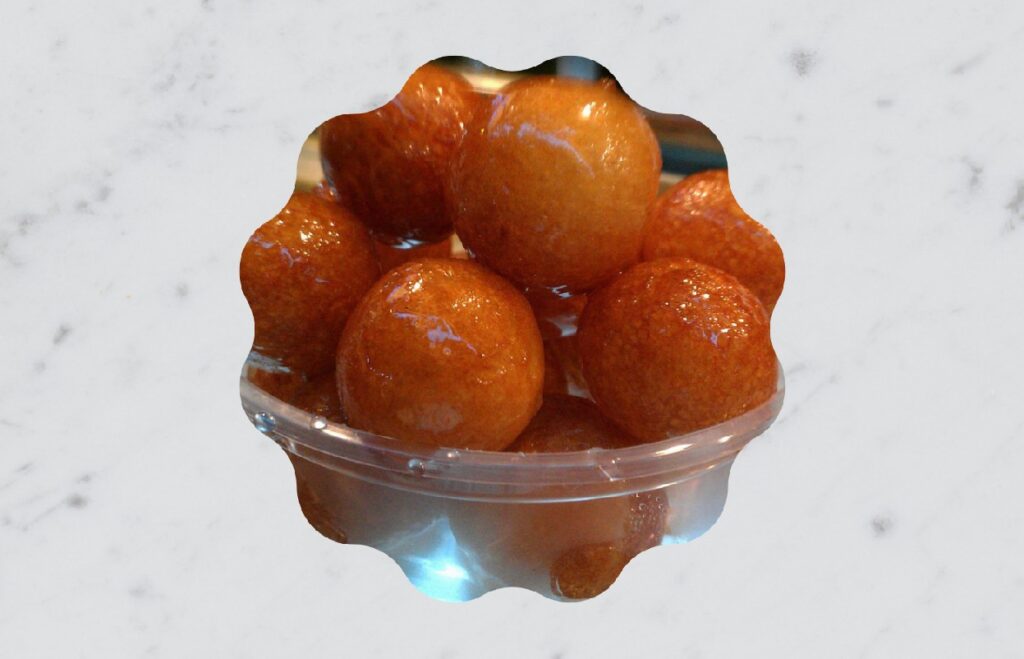
Lokma
Lokma, a dessert with syrup, is one of the most popular desserts. Lokma dessert is an important dessert inherited from Ottoman cuisine to Turkish cuisine. Lokma is known as a dessert unique to Izmir. It is seen that there are desserts very similar to this dessert not only in Turkish cuisine, but also in Arab and Balkan cuisine. In Turkey, this dessert is made and consumed in every region. You can eat this dessert for free in many parts of Turkey.
Because people distribute this dessert to everyone by pouring a bite to celebrate something like birth, circumcision or when they get good news. However, it is distributed not only to celebrate something, but also for ceremonies such as funerals. There are different rumors about the history of the lokma, which draws attention with its practical preparation and taste . It is said that the first bite was made by the Arabs in the 1400s. However, it is thought that the recipe was sent to them from the Ottoman palace.
The preparation of the traditional lokma dessert , enjoyed by sorbet lovers, is as follows:
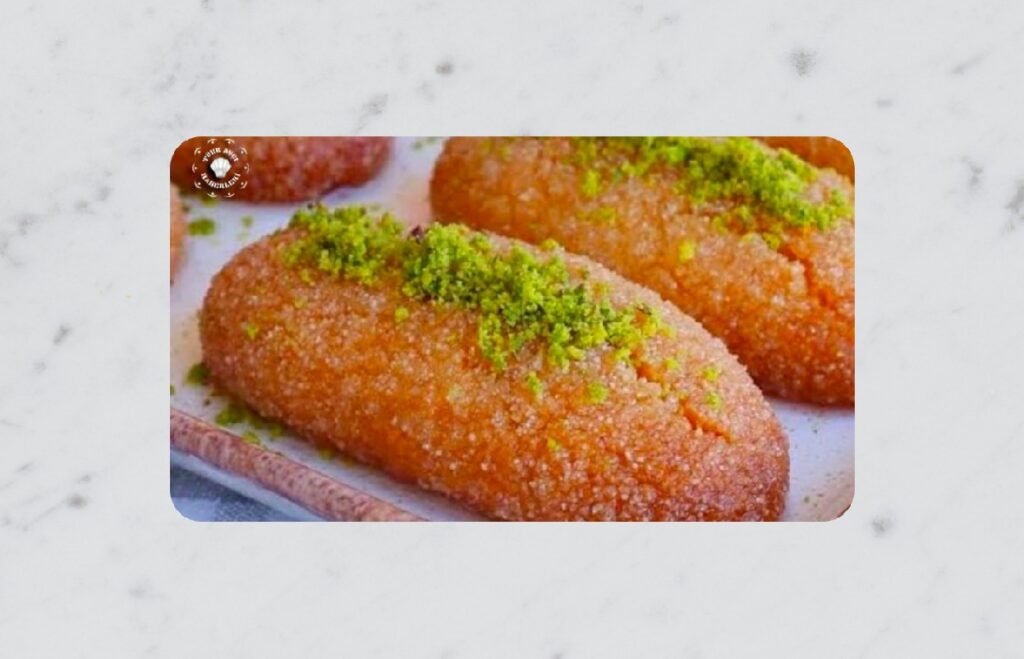
Vezir Parmagi
There are many stories about the Vezir Parmagi dessert . However, the most known and accepted one is that the vizier and the sultan went hunting and the vizier accidentally cut the sultan’s finger. The vizier tells the enraged sultan that he believes this to be beneficial. However, when they return to the palace, the sultan throws the vizier into the dungeon and leaves him to die. After a long time, the sultan encounters a tribe that eats human flesh one of the days when he goes hunting alone.
However, the tribe does not eat the sultan. Because the tribe did not eat people who had cuts and deficiencies on their bodies. Thus, the sultan survived this ordeal and released his vizier, whom he had thrown into the dungeon, when he returned from the hunt. The vizier consoles the sultan, who regrets throwing his vizier into the dungeon, by saying that it is also good for him to be thrown into the dungeon. If he had not been thrown into the dungeon, he would have gone hunting with the sultan and the tribe would have eaten him because he had no cuts or deficiencies on his body.
prepares a special dessert at the feast to celebrate the safe liberation of the sultan from the tribe . The sherbet dessert made from this semolina is called the Vezir Parmagi . For this delicious dessert that will make you eat your fingers, firstly, oil, butter, yogurt and egg are mixed well in a bowl. Baking soda, vanilla and flour are added and kneaded and a medium soft dough is obtained. The walnut-sized pieces cut from the dough are given the shape of a finger.
Finger-shaped pieces are dipped in semolina and placed on the tray. Bake in a preheated oven at 180 degrees for 25 minutes. After cooking, it is left for 5 minutes and the syrup prepared with granulated sugar, water and lemon juice is poured on it and decorated with coconut.
What is Turkey’s most popular dessert?
Turkey’s most popular dessert is undoubtedly Turkish baklava with pistachio.
What is the national dessert of Turkey?
There is no official national dessert by the state. But Baklava, Halva, and Lokum are known worldwide as Turkish national desserts.
What are Turkish sweets called?
Turkish desserts do not have a general name. From the stores with each dessert’s own name.

